Olight Baton 3 Deep Sea Blue Flashlight Review
The Olight Baton 3 is now available in the color-fading “Deep Sea Blue” colorway. Otherwise, it’s a standard Baton 3, which is still great!
Official Specs and Features
Here’s a link to the Olight Baton 3 Deep Sea Blue flashlight product page.
Versions
There are a number of versions. First the packages – there’s the Premium package, which you can see in this review of the Summer edition. That includes the charging/carry case. It’s available in black or red as standard colors, or blue, which is a limited color. And also now in the seasons series, which is another limited color. And then there’s this fade-type color, such as this Deep Sea Blue.
Price
The Olight Baton 3 Deep Sea Blue (Shareasale link) is going for $74.95 right now.
Short Review
Wow, another post on the Olight Baton 3! Yes, this makes a few. There have been a number of editions, and now I own probably 8 of these. This “Deep Sea Blue” is my first Olight to feature the fading style colorway, and it’s great! Otherwise, this is a standard Baton 3, which is also pretty great. While I typically fuss about the CCT on these, it’s actually quite fine – under 5500K on the low modes and still under 6000K on the highest level. Read on for more thoughts.
Long Review
The Big Table
| Olight Baton 3 Deep Sea Blue Flashlight | |
|---|---|
| Emitter: | Luminus SST-40 (CW (6000K-7000K)) |
| Price in USD at publication time: | $74.95 |
| Cell: | 1×16340 |
| Turbo Runtime Graph | |
| LVP? | Yes |
| Switch Type: | E-Switch |
| Quiescent Current (mA): | |
| On-Board Charging? | Yes |
| Charge Port Type: | Proprietary Magnetic |
| Charge Graph | |
| Power off Charge Port | with cell: all modes without cell: no modes |
| Claimed Lumens (lm) | 1200 |
| Measured Lumens (at 30s) | 1282 (106.8% of claim)^ |
| Candela per Lumen | 5.8 |
| Claimed Throw (m) | 166 |
| Candela (Calculated) in cd (at 30s) | 353lux @ 4.673m = 7708cd |
| Throw (Calculated) (m) | 175.6 (105.8% of claim)^ |
| Claimed CCT | 6000-7000 |
| Measured CCT Range (K) | 5400-5900 Kelvin |
| Item provided for review by: | Olight |
| All my Olight reviews! | |
^ Measurement disclaimer: Testing flashlights is my hobby. I use hobbyist-level equipment for testing, including some I made myself. Try not to get buried in the details of manufacturer specifications versus measurements recorded here; A certain amount of difference (say, 10 or 15%) is perfectly reasonable.
What’s Included
- Olight Baton 3 Deep Sea Blue Flashlight
- Cell (customized 16340)
- Charge case
- Charge cable (USB to USB-C)
- Cleaning cloth
- Manual and papers
Package and Manual
Build Quality and Disassembly
You may have seen the photo on reddit: I have a bunch of Olight Batons. Some that I have reviewed, sure, but I have so many that I haven’t even reviewed. And a few of those Batons are just about my most used lights – stock emitter and all.
The threads here are anodized, short, square-cut, and very smooth.
Inside is where we begin to see differences. There’s still “a lot going on” in there but it’s different from previous (non-‘3’) Batons
Size and Comps
Weight (g / oz) 53 / 1.87
Length (mm / in) 63 / 2.48
Head Diameter (mm / in) 21 / 0.83
Body Diameter (mm / in) 21 / 0.8
If the flashlight will headstand, I’ll show it here (usually the third photo). If the flashlight will tailstand, I’ll show that here, too (usually the fourth photo).
Here’s the test light with the venerable Convoy S2+. Mine’s a custom “baked” edition Nichia 219b triple. A very nice 18650 light.
And here’s the light beside my custom engraved TorchLAB BOSS 35, an 18350 light. I reviewed the aluminum version of that light in both 35 and 70 formats.
Here’s the new Olight Baton 3 Deep Sea Blue flashlight with Grogru.
Retention and Carry
We can speak about the Baton 3 having two carry methods. First is the pocket clip, which is mostly the same as previous generations, but with small tweaks.
It’s a two-way clip, which I don’t often love, but this is a reasonable implementation – being two-way doesn’t cause too much extra size.
There’s also a lanyard hole in the pocket clip.
The clip will scratch the body when being installed and removed (it ships installed). That does speak to the tightness with which it connects, though. So that’s good.
Unlike some other editions of the Baton 3, this Deep Sea Blue includes a lanyard. And it’s not some cheap cloth lanyard. This is a full silicone lanyard, and is quite great!
One other way to carry this little light is the crushed velvet carry case. This bag is nice, but … I wonder who uses these? I don’t think I have ever used this type carry bag.
Power and Runtime
The Olight Baton 3 Deep Sea Blue flashlight is powered by a single lithium-ion cell.
This is a customized 16340, with both positive and negative terminals on the positive end. A “normal” (or “non-customized”) 16340 will not work in this light.
Not only that but the positive terminal is recessed into a plastic shroud. This shroud will prevent charging of the cell in most if not all bay chargers.
Here’s a runtime test on turbo. Performance is just like the other Baton 3 lights I’ve tested.
Charging
The Olight Baton 3 Deep Sea Blue flashlight gets the “regular” charging style. There’s no “wireless case.” Like all the other Baton 3’s, this one has a charge base on the bottom.
The regular MCC1A charger is included. This is a proprietary magnetic setup.
Here’s one charging graph. There are really no surprises here.
Modes and Currents
| Mode | Mode Claimed Output (lm) | Claimed Runtime | Measured Lumens | Tailcap Amps |
|---|---|---|---|---|
| Turbo | 1200/300 | 1.5m/75m | 1282 | 2.41 |
| High | 300 | 95m | 309 | 0.41 |
| Medium | 60 | 7.5h | 60 | 0.07 |
| Low | 12 | 33h | 9 | 0.01 |
| Moon | 0.5 | 20d | 0.4 | 0.00 |
Pulse Width Modulation
There’s some sawtooth going on on the lower 3 modes, but I’m hesitant to call this PWM directly.
Here you can see a “baseline” – a chart with almost no light hitting the sensor.
Then there’s the Ultrafire WF-602C flashlight, which has some of the worst PWM I’ve seen. It’s so bad that I used a post about it to explain PWM! Here are multiple timescales (10ms, 5ms, 2ms, 1ms, 0.5ms, 0.2ms) to make comparing this “worst” PWM light to the test light easier. That post also explains why I didn’t test the WF-602C at the usual 50us scale.
User Interface and Operation
The Olight Baton 3 has an indicating e-switch on the head end of the side of the body. The switch cover has a bit of texture and is proud enough that it’s easy to find. It’s also not so proud or soft that it will easily activate accidentally, at least in my experience.
Here’s a user interface table! You’ll know this user interface for years. The S1R Baton II uses the same UI.
| State | Action | Result |
|---|---|---|
| Off | Click | On (mode memory)^ |
| On | Hold (release at desired mode) | Mode cycle (Moon, L, M, H) (no Turbo) |
| Off | Hold | Moonlight |
| Any | Double click | Turbo |
| Any | Triple-click | Strobe |
| Strobe | Click | Off |
| Strobe | Hold | Previous Mode |
| Off | Long hold (past Moonlight) | Lockout |
| Lockout | Hold | Unlock to Moonlight |
| On | Click and Hold (quickly)^^ | Timer (Single blink: 3 minutes, Double blink: 9 minutes) |
| Timer | Click and Hold (quickly)^^ | Switch between 3 and 9-minute timers. |
^ Moon, Low, Medium, and High are memorized. Turbo is memorized as High.
^^ The manual states this as “Double click and hold” but I think it should be “click and hold” quickly. Any form of double click ends in Turbo or Strobe. The manual hasn’t been corrected yet, after all these years of this model.
LED and Beam
The new edition, the Olight Baton 3 Premium Edition, boasts a new Luminus SST-40 emitter. And yeah it’s cool (6000-7000K) (seven thousand Kelvin what)… But it really pumps out the lumens.
Olight has gone with the usual setup for the Baton 3: A press-fit bezel, a TIR optic, and a cool white CCT (“6000K-7000K”).
LED Color Report (CRI and CCT)
Despite the “claim” or “default numbers being listed” as 6000-7000K, what we actually see is something much warmer (but not actually “warm”). I measure this at around 5400-5900, depending on which mode you’re in. Lower modes will have warmer output.
Another thing we can note from these results is that the dUV does the opposite – as the mode level increase, the dUV decreases. This is usually seen as a good thing because it means the light is going from a “more green” tint to a “less green” tint.
So actually what we see on turbo is positively not really bad. Around 5900K and nearly on the black body line…
Beamshots
These beamshots always have the following settings: f8, ISO100, 0.3s shutter, and manual 5000K exposure. These photos are taken at floor level, and the beam hits the ceiling around 9 feet away.
Tint vs BLF-348 (KillzoneFlashlights.com 219b version) (affiliate link)
I keep the test flashlight on the left and the BLF-348 reference flashlight on the right.
I compare everything to the KillzoneFlashlights.com 219b BLF-348 because it’s inexpensive and has the best tint!
Conclusion
What I like
- Build quality is quite good, as usual
- These fading colors are great!
- Full package includes charging and cell
- The user interface retains neat features from previous models, like the 3 or 9-minute timer
- Output does hit the claimed specification
- Doesn’t include “wireless charging case” – something I don’t want to use anyway (and a lower price because of that!)
What I don’t like
- Proprietary cells don’t work in bay chargers
- Greenish output on lower levels
Notes
This content originally appeared at zeroair.org. Please visit there for the best experience!
- For flashlight-related patches, stickers, and gear, head over to PhotonPhreaks.com!
- Please use my amazon.com referral link to help support zeroair.org!
- Please support me on Patreon! I deeply appreciate your support!









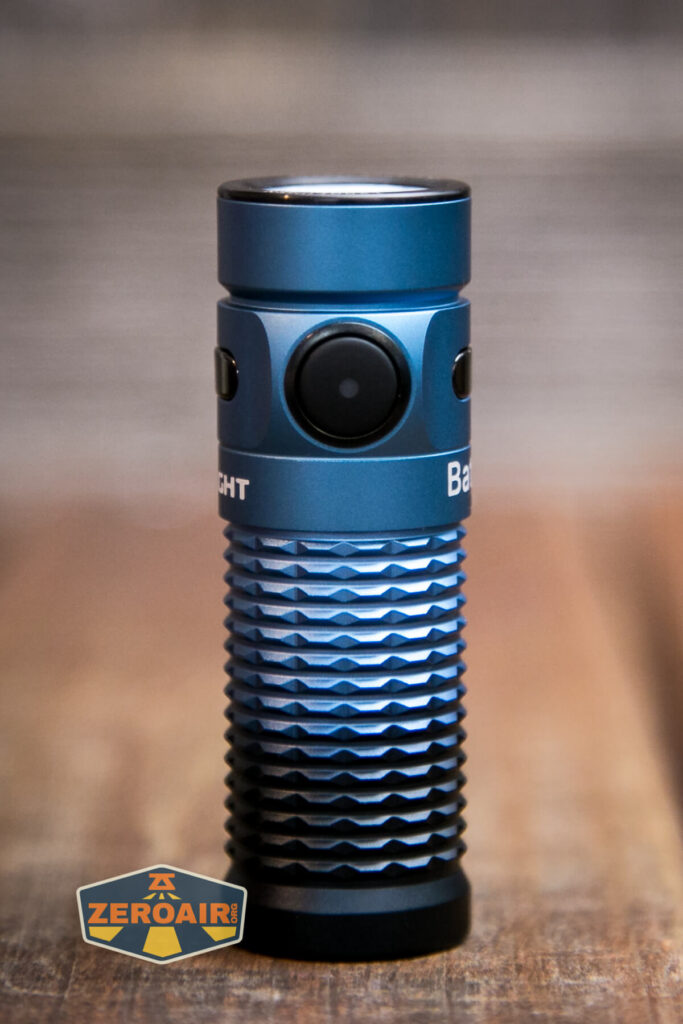



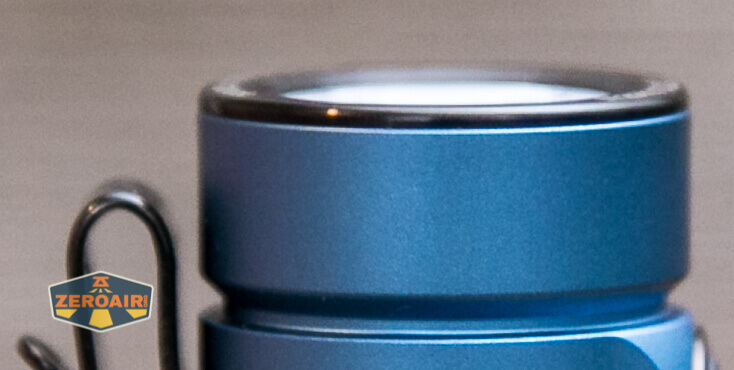



















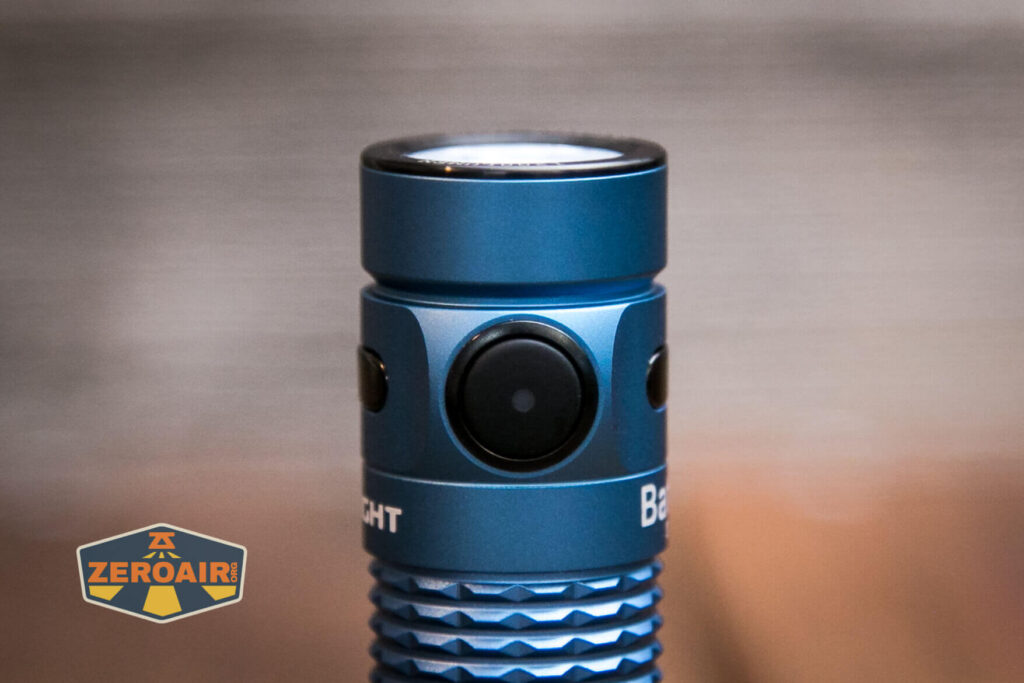



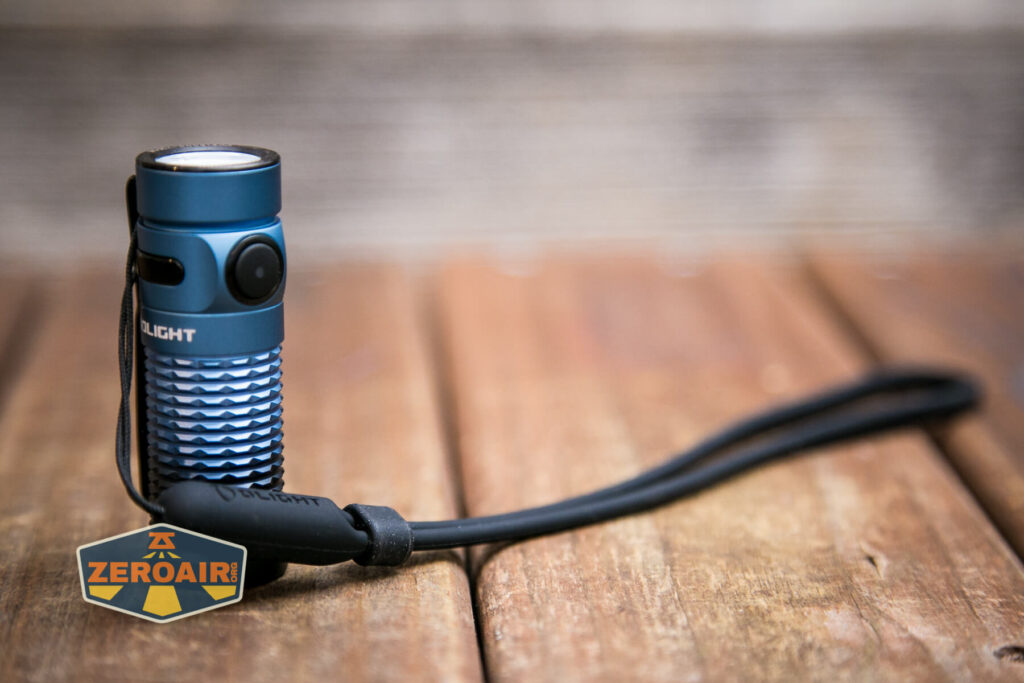




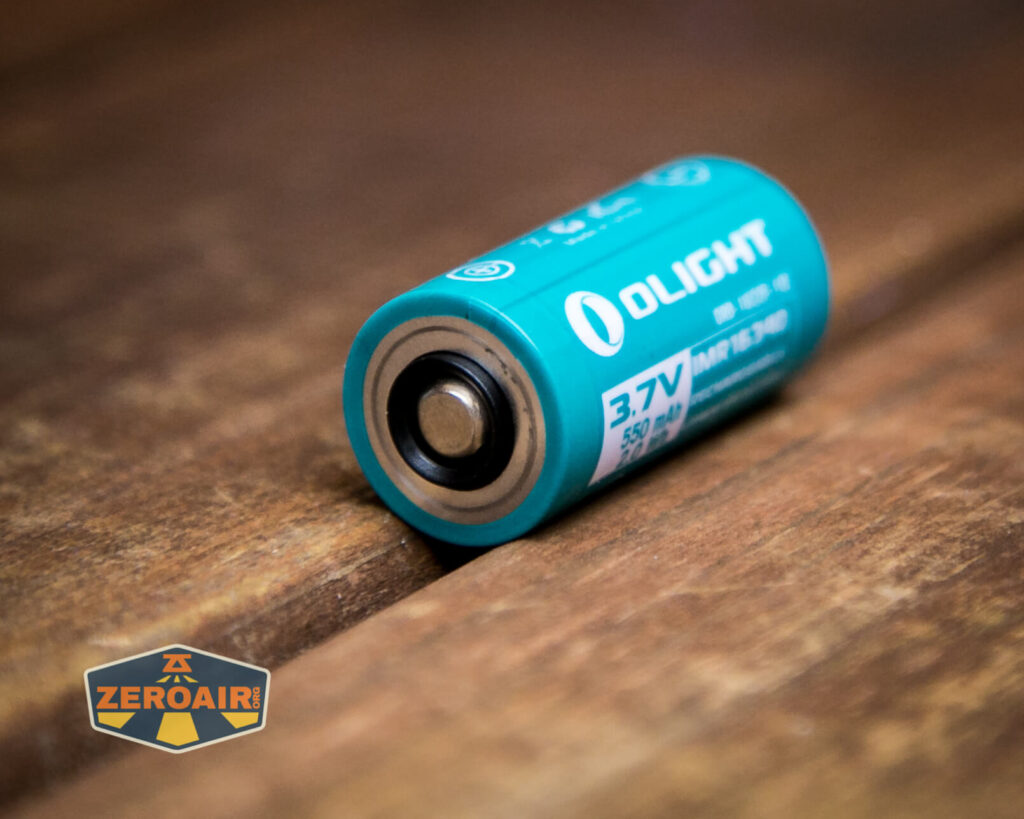
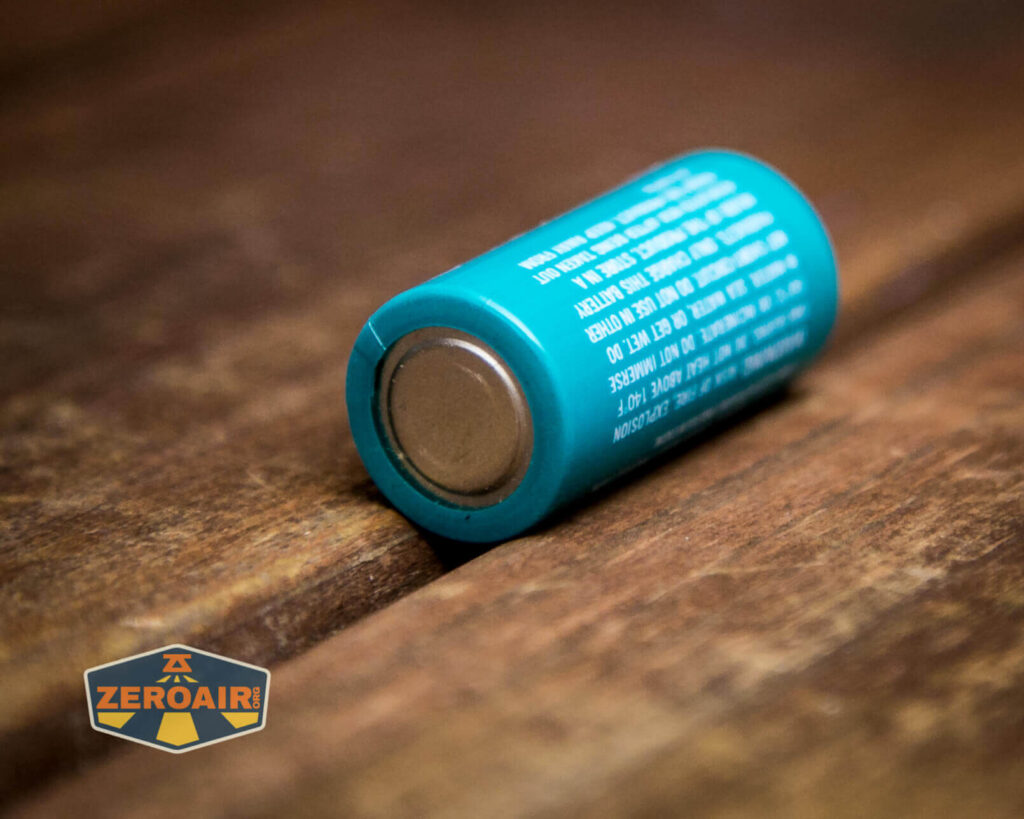

























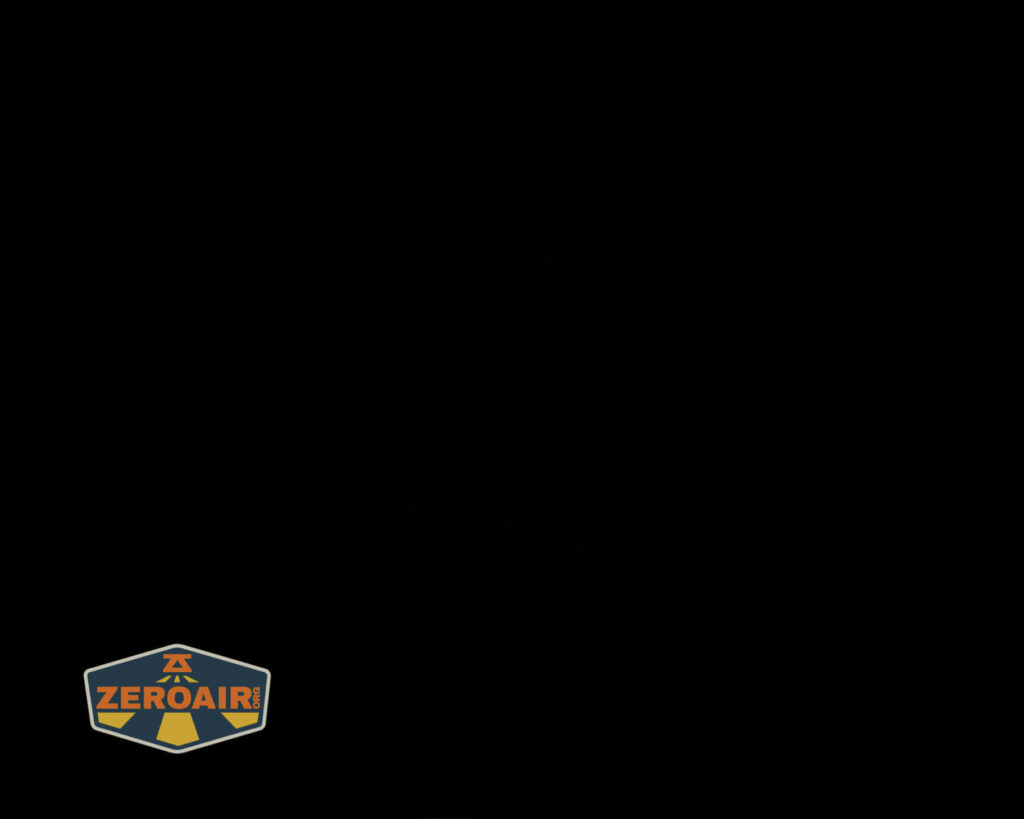



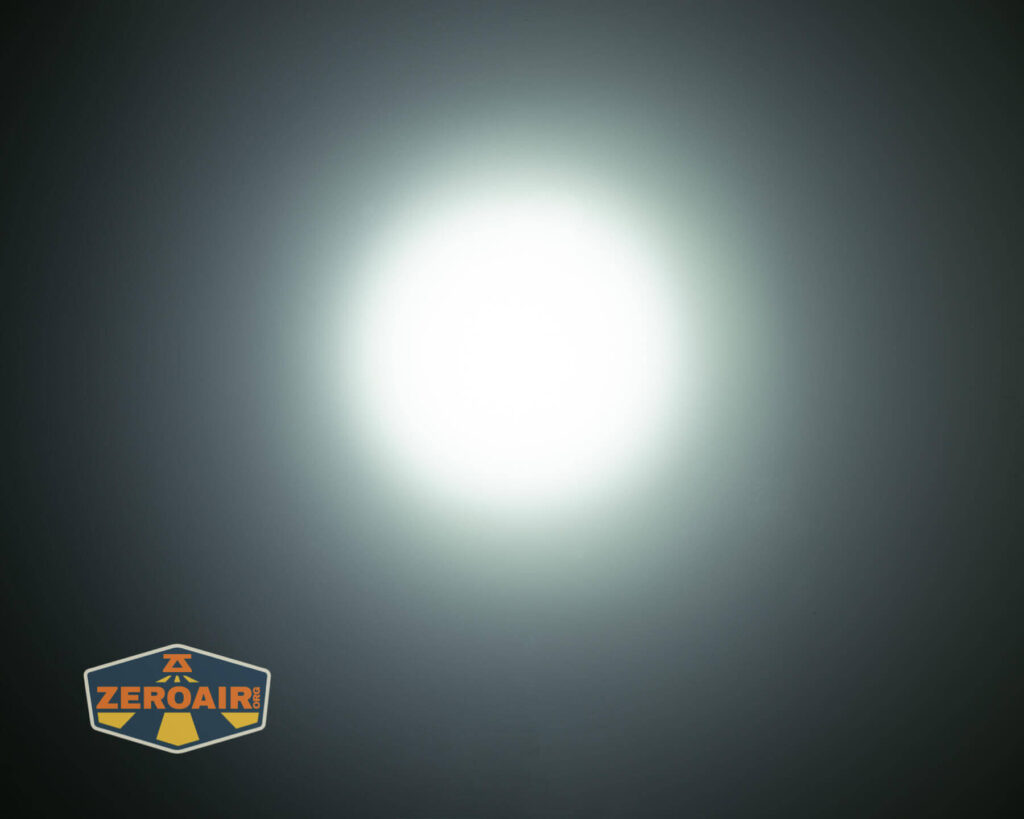
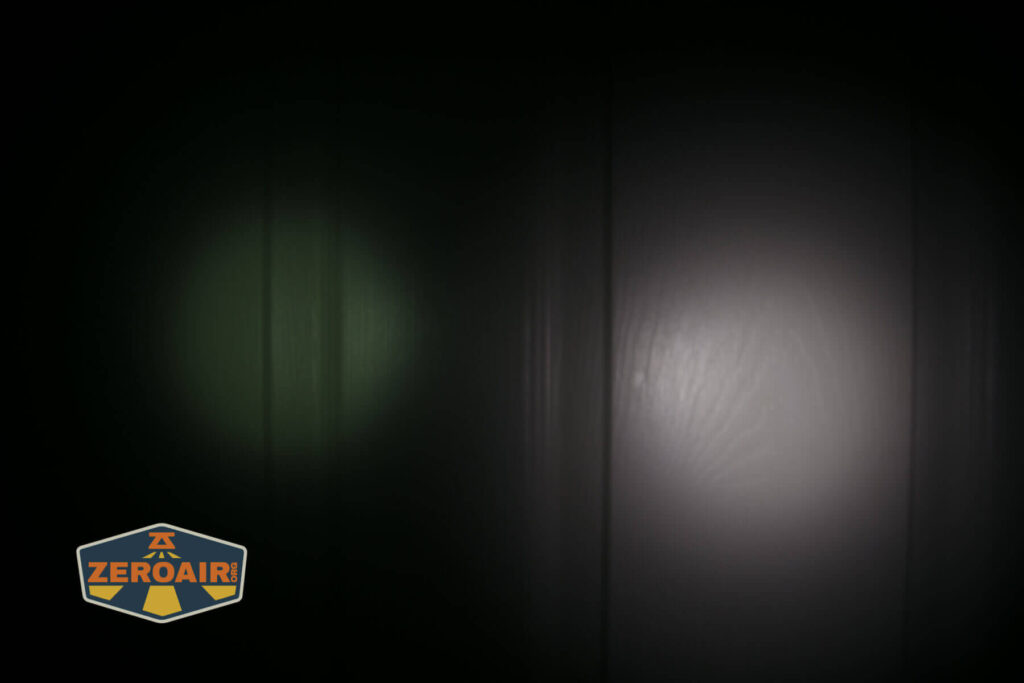




Not sure if there was a revision, but the manuals on Olight’s site show the UI doesn’t include moonlight in the hold rotation anymore.